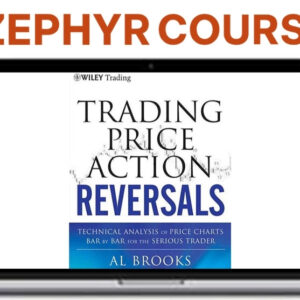Description
Understanding the Basics of Market Moves
When you start exploring the financial markets, it’s essential to grasp what truly drives market movements. You’ll quickly notice that prices don’t just change based on news or numbers—they’re also shaped by market psychology. Investor sentiment, fear, and greed all play a role in the way assets move.
Understanding these psychological factors gives you an edge and helps you anticipate reactions that aren’t always logical.
To navigate these fluctuations, you need to develop and refine effective trading strategies. Relying on a single method won’t cut it; you’ll want to combine technical analysis, fundamental research, and an awareness of market psychology.
The Significance of Pattern Recognition
When you spot repetitive market trends, you gain an edge in predicting future moves.
Pattern recognition lets you cut through noise and make more accurate decisions.
Identifying Repetitive Market Trends
How often have you noticed similar price movements repeating in the markets? Recognizing these patterns isn’t just a coincidence—it’s a core part of understanding trend cycles.
Markets tend to move in waves, and if you pay attention, you’ll spot familiar formations appearing over and over. These repetitions aren’t random; they’re rooted in market psychology.
Collective emotions like fear and greed drive investors to make similar decisions at different times, creating recognizable trends.
Enhancing Decision-Making Accuracy
By sharpening your ability to recognize patterns, you boost your decision-making accuracy and respond more confidently to market signals.
Pattern recognition lets you sift through complex data analysis, highlighting essential trends that might otherwise go unnoticed. When you identify these recurring behaviors, you can integrate them effectively into your decision frameworks, making your actions more systematic and less reactive.
Instead of relying on gut feelings, you’ll use structured data analysis to inform each move. This approach minimizes emotional bias, allowing you to act swiftly and rationally.
Move 1: Identifying Strong Bullish Trends
Although markets constantly fluctuate, spotting a strong bullish trend gives you a crucial edge. You need to recognize when buyers dominate, pushing prices upward with force.
Start by examining trend indicators like moving averages and the Relative Strength Index (RSI). If the price consistently stays above its moving average and RSI hovers above 50, you’re likely witnessing solid market momentum.
Confirm strength by checking for higher highs and higher lows on the price chart. Volume also matters—when it rises alongside price, it signals genuine conviction behind the move.
Don’t ignore news or earnings that might fuel optimism, but rely on your data-driven approach. By focusing on these signals, you’ll confidently ride bullish waves and maximize your trading opportunities with precision.
Move 2: Spotting Sharp Bearish Reversals
Sometimes, a market that seems unstoppable suddenly reverses, catching traders off guard. To spot a sharp bearish reversal, you need to recognize early signals before momentum shifts. One of the most reliable indicators is bearish divergence. When the price makes higher highs but your oscillator—like RSI or MACD—shows lower highs, you’re seeing a clear warning. This mismatch often signals trend exhaustion, where buyers lose steam and sellers prepare to take control.
Pay close attention to volume during these moments. If prices climb on decreasing volume, it can confirm that enthusiasm is fading.
Combine these technical clues with candlestick patterns, like bearish engulfing or shooting stars, to strengthen your conviction. By acting quickly on these signals, you can protect profits or even capitalize on a sudden downside move.
Move 3: Navigating Sideways Consolidation
Ever wonder why markets pause after a big move? It’s often because traders are reassessing, leading to sideways trading. During these periods, price action drifts within a range, lacking clear direction.
Recognizing these consolidations helps you avoid false signals and unnecessary trades. Sideways trading isn’t exciting, but it’s essential for understanding broader market trends. You’ll see momentum stalls, and both buyers and sellers wait for stronger cues.
If you want to navigate sideways consolidation well, keep these tips in mind:
- Watch for horizontal support and resistance levels to define the trading range.
- Use oscillators like RSI or Stochastic to spot overbought or oversold conditions.
- Be patient—wait for a clear breakout before committing to a new position.
Mastering consolidation means better timing and fewer costly mistakes.
Move 4: Recognizing Volatility Breakouts
When you spot a sudden surge past recent price swings, you’re often seeing the start of a volatility breakout.
Pay close attention to volume patterns, since strong volume confirms genuine momentum.
With these tools, you can separate real opportunities from false alarms.
Identifying Key Price Swings
Although markets often move in predictable patterns, significant price swings usually occur during periods of heightened volatility. To identify these key price swings, you need to pay close attention to price action and use trend analysis to spot emerging opportunities.
By focusing on sharp moves away from established ranges, you’ll notice when volatility breakouts are underway. Don’t just follow every spike—look for confirmation within the broader trend.
Here’s how you can recognize major swings:
- Watch for clear breaks from support or resistance levels, signaling a potential new direction.
- Compare recent highs and lows to identify when a swing exceeds previous price action, confirming a genuine move.
- Use trend analysis to guarantee the swing aligns with the prevailing market direction, reducing false signals.
Volume Patterns and Confirmation
Spotting key price swings sets the stage for recognizing real volatility breakouts, but price action alone isn’t enough. You need volume analysis to confirm whether a breakout is genuine or likely to fail.
When prices surge past a resistance or support level, check if trading volume rises considerably. A breakout with weak volume often signals a false move, while strong volume suggests institutional participation and higher follow-through potential.
Pattern confirmation comes into play next. Look for a clear volume spike aligning with your price swing. Without this confirmation, you risk chasing unreliable moves.
Always pair your chart patterns with volume analysis for a complete picture. This disciplined approach helps you avoid traps and capture real momentum, making your volatility breakout entries more reliable and profitable.
Move 5: Capitalizing on Gap Ups and Downs
After a market opens, price gaps can instantly signal opportunity or risk. If you’re keen on gap trading, you’ll want to spot these moves quickly.
Gap ups often suggest strong buying interest, while gap downs can highlight panic selling or negative sentiment. Your edge comes from being able to react swiftly and manage your trades with precision.
Don’t ignore risk management—each gap can bring volatility, so set stop-loss orders and gauge position size appropriately.
Here’s how you can capitalize on price gaps:
- Identify the reason behind the gap—earnings, news, or market sentiment.
- Confirm with volume—strong volume gives gaps more credibility.
- Set clear entry and exit points—define your risk before entering any trade.
Gap trading isn’t about luck; it’s about strategy and discipline.
Move 6: Reading Double Top and Bottom Formations
Now, you’ll want to spot double top and double bottom formations, as these patterns often signal big shifts in price direction.
When you can identify a double top, you’re looking at a potential reversal from an uptrend, while a double bottom points toward a possible bounce from a downtrend.
Let’s break down how to recognize these key signals and use them to your advantage.
Identifying Double Top Patterns
When you’re analyzing price charts, recognizing a double top pattern can help you anticipate potential trend reversals.
To spot this classic formation, focus on double top characteristics: two distinct peaks at roughly the same price level, separated by a moderate trough.
Double top psychology comes into play as buyers push prices up twice but fail to break resistance, signaling weakening momentum. This shift often hints that sellers may soon take control.
Look for these clear signs:
- Two peaks: Both tops should align closely in price, showing resistance.
- Volume drop: Typically, volume declines on the second peak, reflecting diminished buying interest.
- Neckline break: After the second peak, a decisive move below the trough confirms the double top and suggests a potential bearish trend.
Spotting Double Bottom Signals
While markets often test support levels, a double bottom pattern signals a potential bullish reversal you don’t want to miss.
You’ll spot this formation when price drops to a support level, bounces, retests the same level, and then rallies again. The double bottom psychology centers on sellers exhausting their momentum at support, while buyers step in with increasing confidence.
When you see the second bottom hold and volume rise on the upward move, you’re looking at strong market reversal signals. Watch for a breakout above the high between the two bottoms—that’s your confirmation.
Don’t jump in too early; wait for clear evidence of reversal before entering. By reading double bottom signals effectively, you’ll position yourself to catch trend changes before most traders react.
Move 7: Leveraging Intraday Swings
Although markets often appear chaotic, intraday swings offer distinct opportunities for traders who can spot and act on them quickly. You don’t have to hold positions overnight to benefit from price movement. By leveraging intraday volatility, you can capture multiple small gains throughout the trading day.
Swing trading within the day relies on recognizing short-term trends, reversals, and key support or resistance levels. Keep your trades nimble and your strategy disciplined, focusing on high-probability setups rather than chasing every move.
- Watch for volume spikes, as they frequently precede sharp intraday swings and signal shifting momentum.
- Use technical indicators like moving averages or RSI to identify potential entry and exit points.
- Set tight stop-loss orders to manage risk and protect your capital in fast-moving environments.
Move 8: Managing News-Driven Markets
Because headlines can trigger instant market reactions, trading during news events demands heightened awareness and adaptability. You can’t ignore the power of breaking news—economic data releases, geopolitical shifts, or corporate announcements all have the potential to create sudden market volatility.
To manage this, keep a close watch on news sentiment before entering or exiting trades. Positive or negative news can spark rapid price swings, so you need to assess how the market is interpreting the latest headlines.
Set stop-loss orders to protect yourself against unpredictable moves. Adjust your position sizes to limit risk when volatility spikes.
Don’t chase trades based solely on initial reactions—wait for confirmation of the market’s direction. By staying alert and reading news sentiment carefully, you can better navigate the challenges of news-driven markets.
Move 9: Assessing Volume for Confirmation
After you’ve accounted for the impact of breaking news, it’s important to look for confirmation before taking action. Volume analysis gives you a powerful tool to validate whether a price move is genuine or just noise.
When you see a breakout or a trend forming, check if the volume supports it. Strong moves typically require increased volume to confirm they’re backed by real buying or selling pressure, not just speculation.
Pay attention to these confirmation signals to avoid false starts and whipsaws.
- Look for above-average volume during breakouts, as it suggests commitment from traders.
- Watch for diverging volume—if price rises on falling volume, the move may lack conviction.
- Use volume spikes at key support or resistance levels as additional confirmation signals.
Move 10: Timing Entries and Exits
When you’ve identified a high-probability setup, the real challenge lies in timing your entry and exit to maximize gains and minimize risk. Effective timing strategies help you avoid chasing price and entering too early or too late.
Use entry techniques like waiting for a candle close above resistance or confirmation from momentum indicators before committing capital. You might set limit orders at key support or resistance levels, letting the market come to you rather than forcing a trade.
For exits, determine your profit targets and stop-loss levels in advance, sticking to them even if emotions flare. Trailing stops can help lock in gains as the trade moves in your favor.
Move 11–13: Advanced Strategies for Complex Market Conditions
Although the basics of timing entries and exits set a strong foundation, steering through unpredictable markets demands more sophisticated tactics.
When volatility spikes or trends become erratic, you’ll need to adapt your approach with advanced strategies. First, integrate market sentiment analysis into your routine. Gauge crowd psychology to spot turning points or overreactions.
Next, monitor key economic indicators—like GDP growth, unemployment rates, and inflation—to anticipate shifts before they impact prices. Finally, diversify your tactics to stay agile and resilient during turbulent periods.
Consider these essential moves:
- Employ market sentiment analysis to detect shifts in trader psychology before price moves.
- Track leading economic indicators to forecast broader market changes.
- Use hedging or position-sizing strategies to manage risk in complex environments.
Stay adaptable to navigate complexity.
Frequently Asked Questions
Is the Market Moves Formula Suitable for Absolute Beginners in Trading?
If you’re new to trading, you need beginner strategies and a solid trading mindset. You’ll want to guarantee any approach breaks down concepts clearly, avoids jargon, and builds confidence as you learn each step of the process.
Can This Formula Be Applied to All Asset Classes, Like Forex or Crypto?
You can apply similar forex strategies and adapt to crypto volatility across various asset classes. Just remember, each market has unique traits, so you’ll need to tweak your approach to fit forex or crypto’s specific demands.
Does the Formula Require Any Specific Trading Software or Platform?
You don’t need specialized trading software, but you should check platform compatibility before you start. Most formulas work with popular trading platforms, so you’ll likely just need basic charting tools and data feeds to implement it effectively.
How Much Starting Capital Is Recommended to Use This Approach?
When considering starting capital, you should assess your investment risk tolerance and capital allocation strategies. It’s smart to begin with funds you can afford to lose, typically at least $1,000 to manage positions and risks effectively.
Are There Any Ongoing Costs or Subscriptions Associated With the Formula?
When you consider using any financial strategy, you should always check for ongoing fees or subscription models. You’ll want to know upfront if you’ll face recurring charges, so you can factor them into your budgeting and decision-making.













 3-Day Thought Leadership Content Strategy Course
3-Day Thought Leadership Content Strategy Course  Alex Berman – Agency Growth Masterclass
Alex Berman – Agency Growth Masterclass 
 Bazi Hassan – Profit Academy (Make $1k per Day With Clickbank)
Bazi Hassan – Profit Academy (Make $1k per Day With Clickbank)  Brett and Ethan – The Master Closer Trilogy
Brett and Ethan – The Master Closer Trilogy  AloMoves – Mind & Body Refresh
AloMoves – Mind & Body Refresh  Adam Grimes – The Art and Science of Trading
Adam Grimes – The Art and Science of Trading